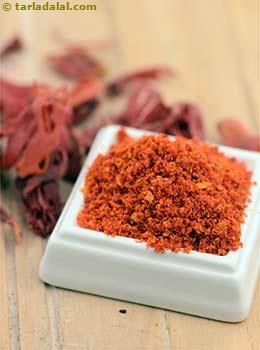Mace powder

Mace powder, also known as ground mace is a brown-coloured, fine powder. It has a spicy taste, but subtler and more delicate than nutmeg. Its strong aroma is a combination of pepper and cinnamon and it therefore sometimes used in recipes instead of pepper. To make mace powder, first clean and roast the whole mace in a hot pan to release the moisture entirely and to make it crisp. Cool it. Now gently grind it in a grinder. If required, sieve it to get a smooth and uniform powder. Store it in a glass bottle and lid tightly when not in use. Always add it at the beginning of the cooking, so that the flavour from its essential oils builds up properly.
• Due to its delicate flavour, mace is widely used in light dishes like broth, soups, mashed potatoes and rice preparations.
• It gives a light orange hue to the recipes and can be used in cooking sauces, curries, pickles and ketchup.
• Due to its warm subtle flavour, similar to that of pepper and cinnamon, it can also be used in brewing tea or masala milk.
• Mace is predominantly used in sweet dishes like pies, milk custards, puddings, fruit dishes, biscuits, muffins, cakes and breads.
How to store mace, javintri, javitri, javantri
• Mace has a good shelf life, provided it is stored in an airtight glass container in cool, dry and dark place, away from sunlight.
• Refrigeration is not required.
• Fresh mace flavour will last for at least six months.
Health benefits of mace, javintri, javitri, javantri
Mace helps in digestion and also stimulates the appetite. It also helps clear digestive tract infections by fighting bacteria and viruses. Mace can relieve intestinal gas and flatulence. It can reduce vomiting, nausea and general stomach uneasiness. The compound Eugenol in it has been found to relieve toothache and thus it is an important component in toothpaste. Being rich in potassium, it is known to have heart protecting benefits. It also contains some amounts of iron, vitamin A, vitamin C and fibre.